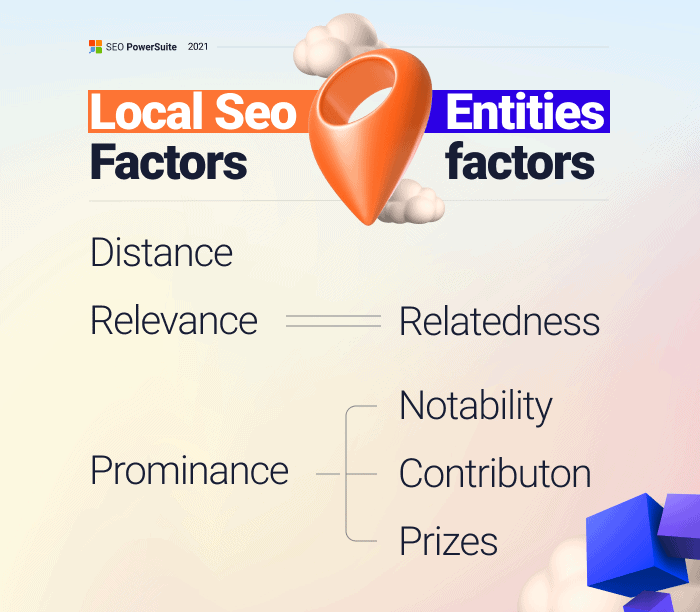What Is Local SEO?
Local SEO is optimizing your site to rank better for a local audience. This helps you reach and attract potential customers in your geographical area or target locality.
In my experience, when competing for high-demand keywords like “food catering services,” adding a location modifier such as “in Cebu” can significantly improve your chances of ranking higher. This approach, known as local SEO, allows you to connect with a specific audience in your area before expanding your focus to broader keywords. It serves as a strategic step to assess your readiness for targeting more competitive keywords once the localized ones achieve stable rankings within the top three search results or on the first page.
Your website can potentially reach audiences worldwide through search engines. However, if your target customers are primarily located nearby, implementing local SEO is essential.
Many SEO specialists were already employing this strategy before the term “local SEO” gained popularity; back then, it was simply considered part of standard SEO practices.
Local SEO remains crucial even if you’re aiming for a wider audience. Why expend effort trying to attract customers 100 kilometers away when there are potential buyers right in your vicinity? It’s always more effective to engage with the local market first unless there’s a compelling reason not to do so.
Essentially, local SEO involves optimizing for the city name and address where your business operates.
Have you tried using similar search terms on Google?
- Corporate lawyers in Cebu
- Veterinarian in Banilad
- Plumber near me
- Caterer in Mandaue
- Condominium within Mactan
I hope this clarifies my point. While local SEO is often associated with brick-and-mortar businesses, online shops can also reap its benefits.
The fundamental reason behind this is that search engines strive to deliver relevant results based on user queries. If the results lack relevance, they fail to fulfill their purpose as search engines.
Unlocking the Power of Local SEO: Three Key Elements You Need to Know
Local search engine optimization (SEO) is crucial for businesses looking to attract prospects and target audiences in specific geographical areas. To maximize the effectiveness of local SEO, understanding three key elements is essential. These elements include identifying the most effective search terms, considering more than just relevance and search volume, and understanding the searcher’s journey and intent.
Keyword Relevance
Keyword relevance is crucial in local SEO because it ensures that your content aligns with the specific search queries of users in your target area. By optimizing for relevant keywords, you increase the likelihood of appearing in search results when potential customers are looking for services or products nearby, ultimately driving more qualified traffic to your business. This targeted approach enhances visibility and engagement within your local market.
Identifying Effective Search Terms
When building links via link outreach in local SEO, knowing which search terms your prospects or target audience use is vital. Let’s take an example related to hypnotherapy services on the Central Coast of Australia.
Considering variations such as “Hypnotherapy Central Coast, Australia,” “Hypnotherapy Wamberal, NSW, Australia,” “Hypnotherapy Wamberal,” and “Hypnotherapy Australia,” which do you think would generate more conversions like leads or customers among these four options?
A comprehensive analysis is required to determine the most effective search term for maximizing conversions. Factors such as competition levels for each term, audience preferences, and potential traffic volume must be considered. Businesses can make informed decisions about their target keywords by investing time and resources into thorough research.
Beyond Search Volume and Keyword Difficulty
While search volume and keyword difficulty are essential when choosing keywords for local SEO strategies, they should not be the sole focus. In fact, other key elements contribute to a thriving local SEO campaign, particularly relevance.
Is your keyword relevant to your target audience?
Understanding user intent is crucial in selecting appropriate keywords that align with what potential customers are actually searching for. By providing value through informative content that addresses user needs, businesses can increase their chances of attracting relevant traffic and generating leads.
Additionally, it’s essential to consider the context of local searches. Location-specific terms play a significant role in targeting audiences interested in localized products or services. Incorporating these terms strategically into website content and meta-information can enhance visibility in local search results.
User Experience
Optimizing for user experience is another essential aspect of local SEO. Ensuring that websites are mobile-friendly, fast-loading, and easy to navigate helps improve user engagement. It encourages visitors to take desired actions, such as making purchases or submitting contact forms.
Understanding the Searcher’s Journey and Intent
The final key element of successful local SEO is understanding the searcher’s journey about their search intent. This involves comprehending the different stages potential customers go through before purchasing.
Awareness: Users seek information or solutions at this stage but may need a more precise idea. Optimizing content with informative blog posts, videos, or guides can attract users who are searching more broadly.
Consideration: During the consideration stage, users better understand their needs and are actively researching products or services. Creating comparative content, testimonials, case studies, and answers to frequently asked questions (FAQs) can assist users in evaluating their options.
Decision: At the decision-making stage, users are ready to choose a specific solution or provider. Emphasize your unique selling points (USPs), customer reviews, pricing details, and any promotions or incentives to guide users towards selecting your business.
You can effectively engage potential customers and drive conversions by tailoring your local SEO strategy according to each stage of the searcher’s journey and aligning it with search intent at each step.
In conclusion, mastering these three key elements will help businesses unlock the power of local SEO. By identifying effective search terms aligned with user intent, considering factors beyond relevance and search volume when selecting keywords, and understanding the searcher’s journey and intent about localized searches, businesses can increase their chances of attracting valuable leads and customers within their targeted locations.
Local SEO tip: Check the photos displayed in your Google Maps Pin Overlay
These photos appear when you scroll over the pin. Check what images that get displayed for your business. While you can’t totally control what Google puts in there, you can manage the older photos by editing your business profile.
Source: https://www.seroundtable.com/local-seo-tip-photos-google-maps-pin-overlay-34706.html
Factors Affecting Local SEO Rankings in 2022 (Entity-based Approach)
Local SEO has never been the same as traditional SEO. Despite their proximity, these two have different ranking considerations. The importance of local SEO cannot be overstated, as 77% of clients utilize Google to find local companies.
What makes local SEO unique? The fundamental distinction is that Google ranks real, local companies rather than separate website pages for local inquiries. Or, to put it another way, entities. As a result, it makes a lot of sense to examine the local SEO factors we already know from an entities-based perspective.
Google’s ranking system
Entities contain four particular ranking variables, according to a Google patent from 2015 titled Ranking Search Results Based On Entity Metrics:
- Relatedness. We need to review what we know about Word2Vec to understand the concept of relatedness properly. In a nutshell, this process allows Google to recognize words and concepts and their relationships.
- Notability. The relative importance of an entity is measured by its notability. The central concept here is that you can’t compare global popularity measures (links, mentions, etc.) of entities in distinct niches since the niches’ popularity differs.
- Contribution. Contribution, unlike notability, is limited to a specific niche. It is determined by external signals and shows how much weight a business has in its industry.
- Prizes. This measure is based on a business’s awards—Michelin stars for restaurants, Oscars for filmmaking, Nobel medals for science, etc. The more “valuable” a prize is, the higher it rises the entity’s rank.
Transferring entities to local SEO
Google isn’t offering much when it comes to local SEO. Yet, we know that relevance, distance, and prominence are the essential factors in determining local outcomes.
And, although distance makes everything more or less evident, what should we do with relevance and prominence?
Because every local business is an entity, and local SEO is all about ranking entities, it’s only fair to apply what we’ve learned about entities in general to the details of local SEO. As a result, we can better grasp what and how to optimize for local search.

Local SEO is really about entities and their interrelationships. Both in the virtual and physical worlds. Do you want to be successful online? You can use this all-in-one SEO tool to give you a unique analytic insight of your website. But don’t forget to go outside and do marketing in the real world; this is to ensure that your success will be online and in the real world.
Multilingual and Multi-Location Content: A Guide to Help Google Understand Your Website
If your website includes content in different languages or locations, here is how to help Google understand it.
Targeting site content to a specific country (geotargeting)
To geotarget your site on Google:
- Page or site level: Use locale-specific URLs for your site or page.
- Page level: Use
hreflangor sitemaps to tell Google which pages apply to which locations or languages.

